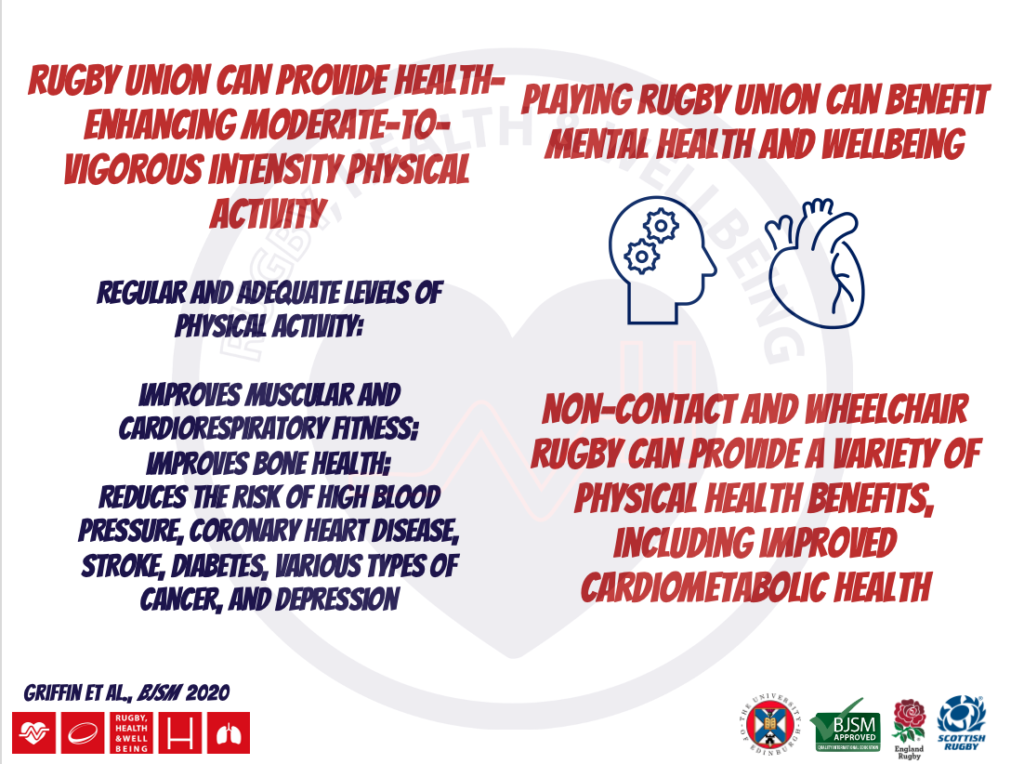Objective: To scope the relationships between rugby union, and health and well-being.
Design: Scoping review.
Data sources: Published and unpublished reports of any age, identified by searching electronic databases, platforms and reference lists.
Methods: A three-step search strategy identified relevant published primary, secondary studies and grey literature, which were screened using a priori inclusion criteria. Data were extracted using a standardised tool, to form (1) a numerical analysis and (2) a thematic
summary.
Results and discussion: 6658 records were identified, and 198 studies met the inclusion criteria. All forms of rugby union can provide health-enhancing physical activity (PA). ’Non-contact’ and wheelchair rugby in
particular provide a wide range of physical and mental health and well-being benefits. The evidence is either mixed or unclear in relation to ’contact’ rugby union and its effects on a range of physical health domains. Injury and concussion incidence rates are high for contact rugby union relative to other sports.
Conclusions: A wide range of stakeholders as well as existing and potential participants can use this information to make a more informed decision about participating in and promoting rugby union as a health enhancing activity. Industry and policy-makers can use this review to inform policies and strategies that look to increase participation rates and use rugby union as a vehicle to contribute positively to population
health. Further research understanding rugby union’s contribution to PA as well as to muscle-strengthening and balance is indicated, as well as research examining more health and well-being outcomes across more
diverse cohorts.


